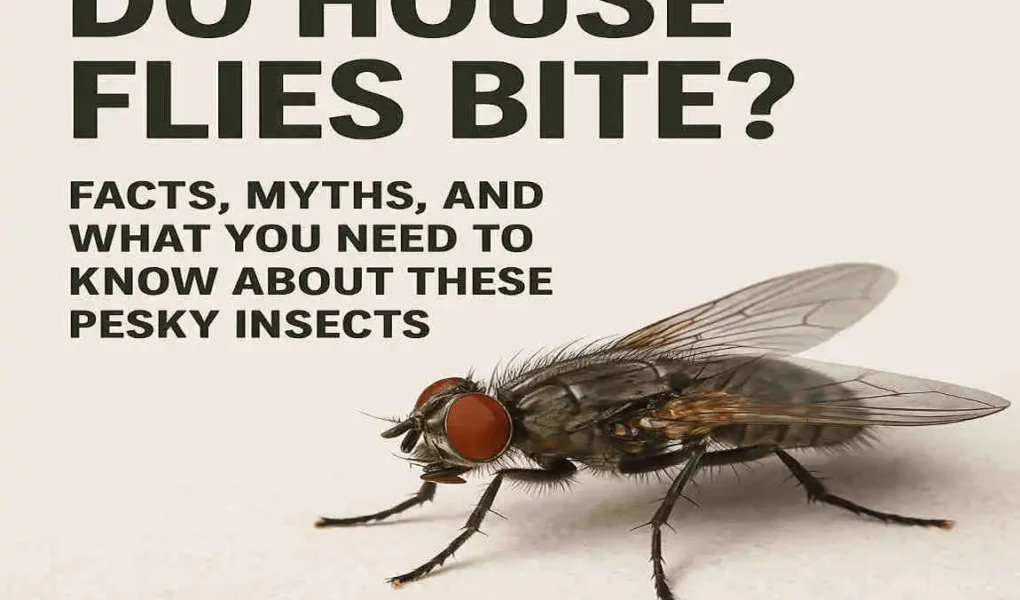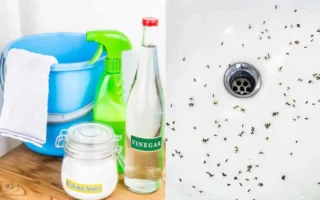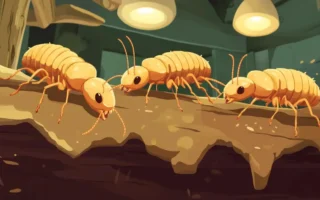House flies are one of the most common pests found in homes, restaurants, and virtually any place humans inhabit. Their buzzing presence often causes frustration and annoyance. But beyond their nuisance factor, there’s a common question that sparks curiosity and worry: “Do house flies bite?”
Understanding House Flies
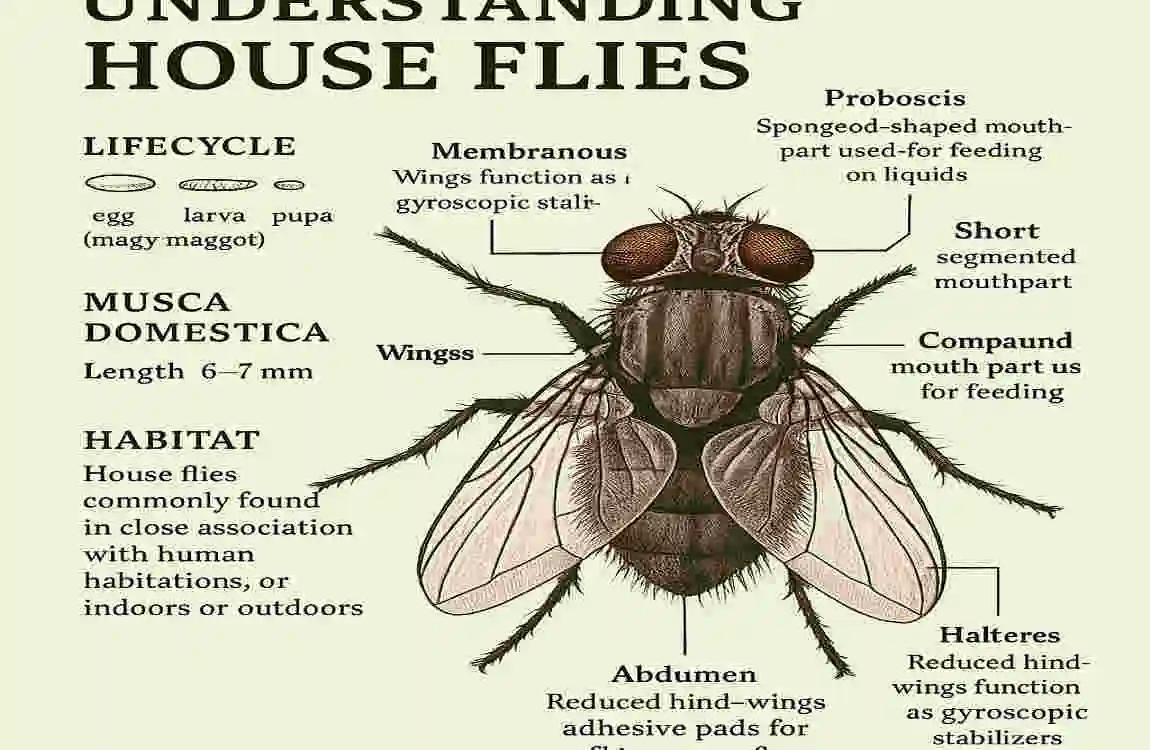
Let’s start by getting to know the house fly better! Despite their tiny size, these insects have fascinating biology and unique feeding habits that set them apart.
What Are House Flies?
House flies, scientifically known as Musca domestica, are small flying insects that belong to the family Muscidae. These insects are incredibly adaptable and can thrive in nearly any environment where humans or animals live. They are gray, with four dark stripes on their thorax and red compound eyes. Typically, adult house flies measure about 6-7mm in length.
House flies are notorious for their rapid breeding. A single female can lay up to 500 eggs in her lifetime, usually in moist, decaying organic matter such as garbage, manure, or rotting food. Within a week, those eggs hatch into larvae (maggots), which eventually develop into adult flies.
How Do House Flies Feed?
House flies have sponging mouthparts, which means they cannot bite or pierce skin. Instead, their mouths are designed to soak up liquids. They feed by regurgitating digestive enzymes onto solid food, breaking it down into a liquid form they can then sponge up.
Why Are They Attracted to Humans?
You may have noticed house flies buzzing around you, especially on hot summer days. This is because they are drawn to:
- Sweat and body moisture – Flies are attracted to salty liquids, including sweat.
- Organic material – Dead skin cells, food particles, or open wounds are irresistible to them.
- Warmth and carbon dioxide – Like many insects, flies are drawn to the warmth of human bodies and the carbon dioxide we exhale.
Do House Flies Bite? The Facts
The short and definitive answer is no, house flies do not bite. However, there are situations where their behavior might make you think otherwise. Let’s dive deeper into the facts.
Why Can’t House Flies Bite?
House flies lack the anatomy needed to bite. Their sponging mouthparts are soft and incapable of piercing skin. This is in stark contrast to other fly species, such as stable flies and horse flies, which have biting mouthparts designed to feed on blood.
What Causes the Sensation of a “Bite”?
If house flies don’t bite, why do some people report feeling like they’ve been bitten? Here are a few explanations:
- Light Touch on Sweaty Skin: When a house fly lands on you, its legs and mouth may create a light tickling or irritating sensation, especially if you’re sweating.
- Probing Small Wounds: Flies are naturally attracted to open wounds, scabs, or sores. While they don’t bite, they may probe these areas, which can feel uncomfortable.
- Enzyme Spitting: Flies regurgitate saliva containing enzymes to break down food. If they land on your skin, you might feel irritation from this process.
House Flies vs. Biting Flies
It’s important to distinguish between house flies and other biting flies. Common biting flies include stable flies, horse flies, and deer flies. These species have sharp, piercing mouthparts and feed on the blood of humans and other animals.
Myths and Misconceptions About House Fly Bites
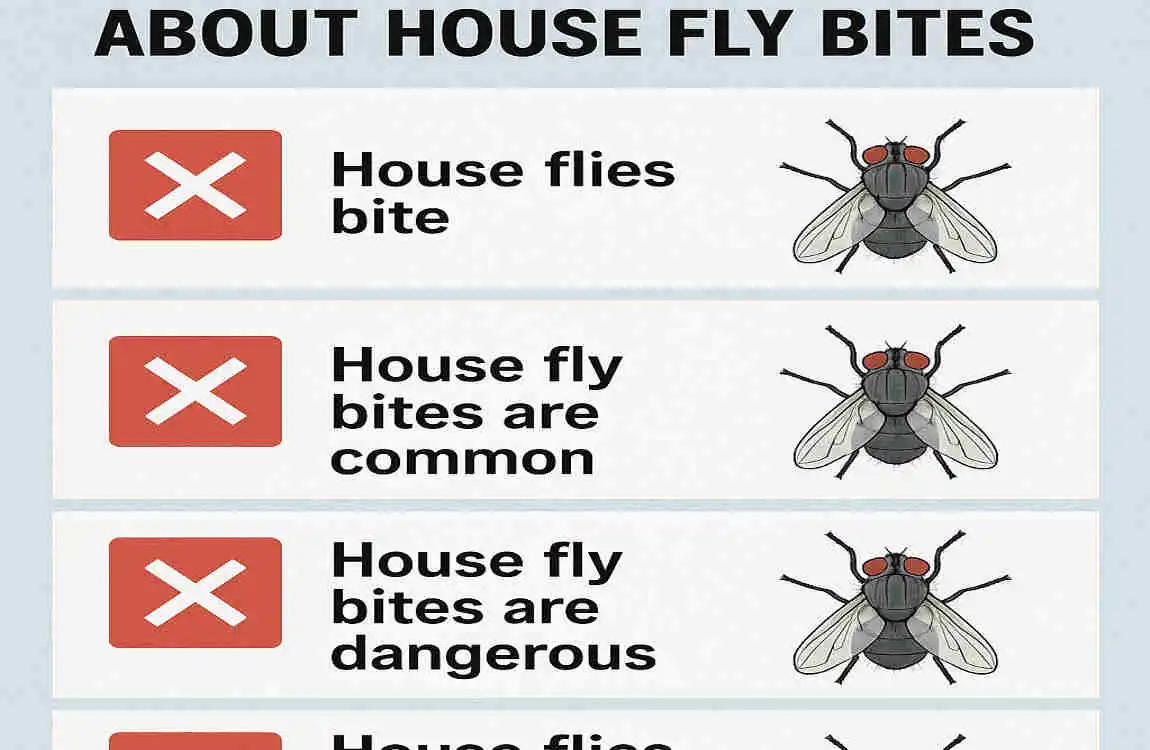
There are several myths surrounding house flies and their supposed ability to bite. Let’s clear up the confusion.
Common Myths About House Fly Bites
- “A house fly has bitten me!” This is one of the most repeated misconceptions. In reality, house flies cannot bite, but their behavior can irritate your skin, leading people to believe they’ve been bitten.
- “House flies are harmless.” While they don’t bite, house flies are far from harmless. They carry bacteria and pathogens that can pose serious health risks.
Why Do People Think They’ve Been Bitten?
The misconception that house flies bite often stems from their tendency to land on human skin or wounds. Additionally, the presence of other biting flies in the same environment can lead to confusion.
Health Risks Related to House Flies
Although house flies don’t bite, they can still pose significant health risks. Let’s look at how these pests can impact your well-being.
Disease Transmission
House flies are known to spread more than 65 diseases, including:
- E. coli
- Salmonella
- Shigella
- Cholera
They pick up bacteria and pathogens from decaying organic matter, feces, and garbage, and transfer them to surfaces, food, or directly to humans.
Skin Irritation
While house flies don’t bite, their saliva and regurgitated enzymes can cause skin irritation, especially if they land on open wounds or sensitive areas.
Secondary Infections
If a fly contaminates an open wound or scab, it increases the risk of secondary infections. This is why it’s essential to keep cuts and wounds covered in fly-prone areas.
How to Protect Yourself from House Flies
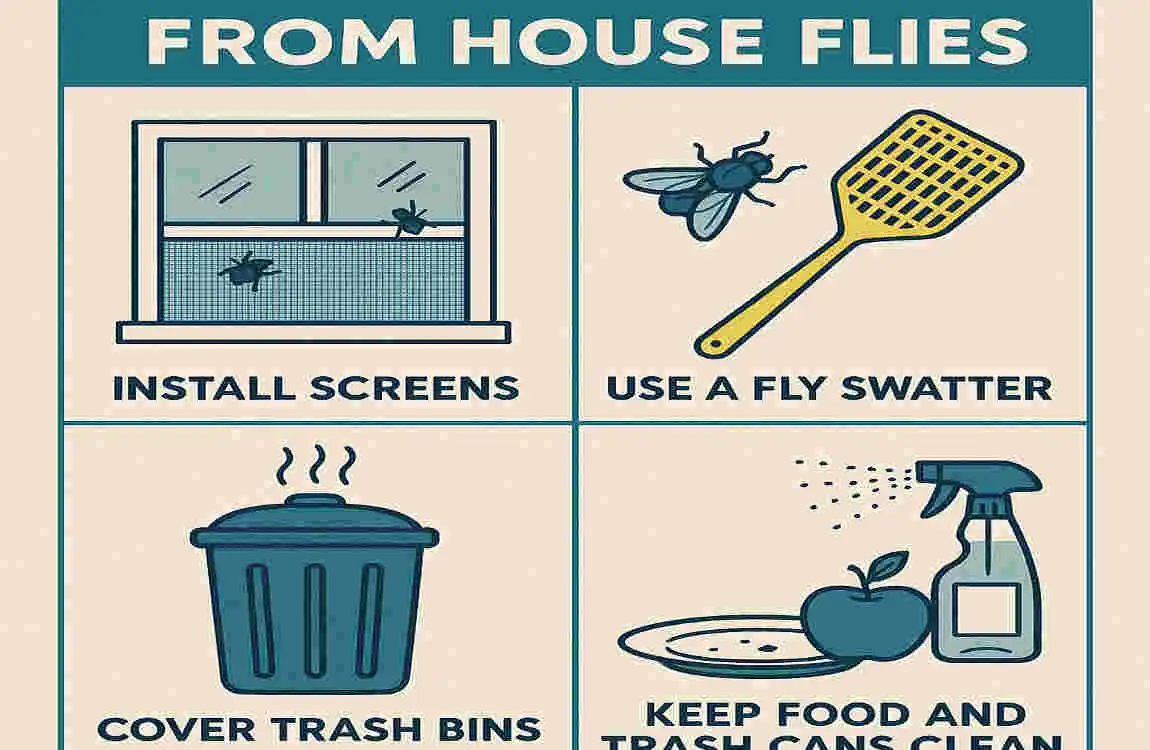
Now that we understand the risks, let’s explore practical steps to keep house flies away and maintain a clean, healthy environment.
Reduce Attraction
- Keep Your Space Clean: Regularly dispose of garbage, clean food spills, and avoid leaving dirty dishes out.
- Manage Waste Properly: Use tightly sealed trash cans and dispose of organic Waste promptly.
- Eliminate Breeding Sites: Remove decaying organic matter, such as spoiled food or animal feces, which are prime breeding grounds for flies.
Cover Food and Drinks
Flies are drawn to food, so always cover your meals and beverages when outdoors or in fly-prone areas.
Use Pest Control Methods
- Fly Traps: Sticky traps or UV light traps can help capture flies.
- Insecticides: Use fly sprays or insecticides as a last resort for severe infestations.
- Screens and Nets: install mesh screens on windows and doors to keep flies out of your home.
Do House Flies Bite? FAQ
Do house flies bite humans?
No, house flies do not bite humans. This is because they lack the necessary mouthparts to pierce skin. House flies have sponging or lapping mouthparts, which are designed to soak up liquids rather than puncture skin .
Why do people think house flies bite?
Many people mistake the irritation caused by house flies for bites. Here are some reasons why:
- Light Touch: When a house fly lands on sweaty or sensitive skin, its legs or mouthparts may create a tickling or irritating sensation.
- Probing Wounds: Flies are attracted to open wounds or scabs and may probe these areas, which can feel uncomfortable.
- Enzyme Spitting: House flies regurgitate saliva containing enzymes to break down food. If this happens on your skin, it may cause mild irritation .
What do house flies eat if they don’t bite?
House flies feed on liquids or softened organic material. They use their sponging mouthparts to soak up food, which can include:
- Decaying organic matter
- Garbage
- Animal feces
- Sugary liquids
- Food scraps .
Are there any flies that do bite?
Yes, several species of flies bite humans and animals. These include:
- Stable flies
- Horse flies
- Deer flies
- Black flies
These biting flies have sharp, piercing mouthparts designed to draw blood, which they need for reproduction .
How can I tell the difference between house flies and biting flies?
Here’s a quick comparison:
| Feature | House Flies | Biting Flies (e.g., Stable Flies) |
|---|---|---|
| Mouthparts | Sponging, soft | Piercing, biting |
| Bite Humans? | No | Yes |
| Feeding Habits | Liquids, organic waste | Blood of humans and animals |
| Appearance | Gray with red eyes | Often have distinct spots or markings |
| Bite Sensation | No actual bite, mild irritation | Painful, sharp bite |

